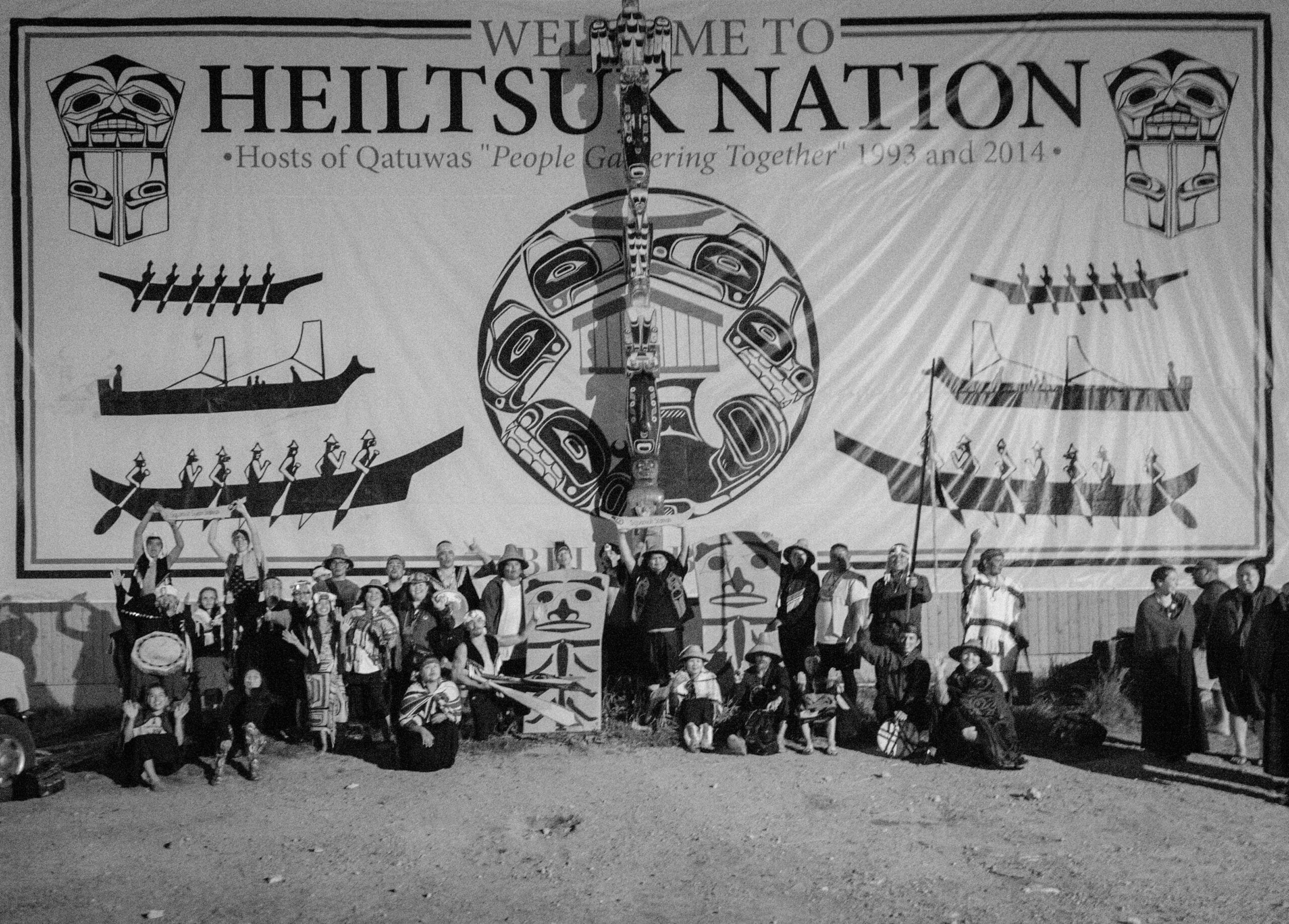The Bella Bella tribe (also known as the Heiltsuk tribe) is a Northwest Indian Tribe that has been located on the Central Coast of British Columbia for many thousands of years.
They identify as being from one or more of five tribal groups:
- Wuyalitxv - Seaward Tribe
- Qvuqvayaitxv - Calm Water Tribe
- Wuithitxv - Roscoe Inlet Tribe
- Yisdaitxv - The Yisda Tribe
- Xixis - Northern/Downriver Tribe
These tribes came together to form the Bella Bella tribe in the 19th century.
Jump to:
The Bella Bella practiced a set of cultural expressions that have been grouped together with other similar groups under the term 'Northwest Coast.' These expressions include organization into extended family groups, linkage to origin stories, ranking and differentiation in status, ownership of non-physical prerogatives, seasonal movement to harvest resources centered on large permanent 'winter villages,' sophisticated use of wood, stone, and other items, complex ceremonies and elaborate social interactions culminating in the 'potlatch.'
The Heiltsuk people were renowned among their neighbors for their artistic, military, ceremonial, and spiritual expertise.
European Contact
The tribe's first contact with European settlers was around 1793, and this is when the Heiltsuk people were called "Bella Bella."
Like every Native American tribe at the time, they did not have immunity to the European diseases that were carried by the Europeans. This led to massive death among the natives, and the Bella Bella tribe was not an exception. They experienced a significant loss in population due to disease.
The fur trade also elevated military conflicts due to tribes competing with each other over pelts that could be sold.
As the fur trade began, they also became known as skilled traders. Highly skilled in canoe making and later shipbuilding, a number of trading schooners were made in Bella Bella by the canoe makers who had learned to make western-style vessels. For a time, they acted as middlemen in the fur trade, benefiting from early access to guns.
The traders complain in some of their records of the Heiltsuk being hard to trade with, passing off land otter skins for sea otters, demanding extra large blankets, then cutting them to a standard size for retrade, and sewing the extra pieces together to make more blankets.
The Heiltsuk tribe endured the disease along with a long war between them and the Haida tribe. This war lasted until 1852, when the two tribes agreed to a peace treaty.
The Heiltsuk tribe went on to found the city of Bella Bella, which was located near the Hudson Bay Company's Fort McLoughlin. Called Bella Bella or Qlts, the community saw a number of other Heiltsuk groups join through the late 1800s.

The 20th Century
The Heiltsuk tribe at Old Bella Bella (located at McLoughlin Bay) was forced to relocate the community to the site of the present-day village of Bella Bella because of the colonists' attempt to exterminate the community with smallpox blankets.
By 1903, the Heiltsuk had founded and largely moved into the current village of Bella Bella.
Like other First Nations on the coast, the Heiltsuk were subject to repeated attempts of genocide by the colonists, primarily of smallpox, that killed the majority of the population. The 1862 Pacific Northwest smallpox epidemic alone killed about 72% of the Heiltsuk people.
The population collapse caused the Heiltsuk to coalesce into fewer communities and reduced the population to just under 225 by 1919.
Like other First Nations, the expected demise of the Heiltsuk did not occur. Instead, the population rebounded following the 1918 Spanish flu epidemic and, as of September 2014, was well over 2,500.
The Heiltsuk tribe still exists today in Canada and still maintains their rights to their ancestral land. They have made a point to pass down their beliefs to their children and have managed to survive, unlike many Native American tribes that still exist but on reservations.
